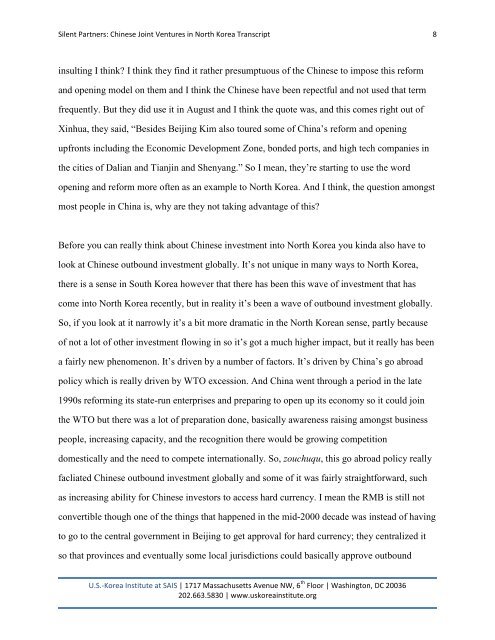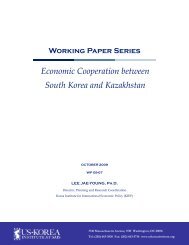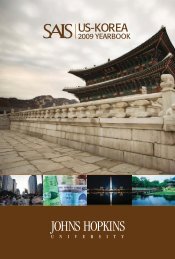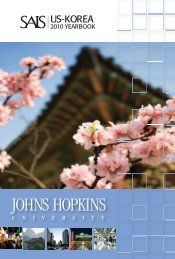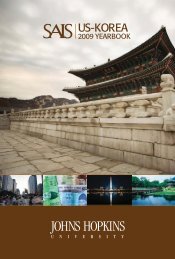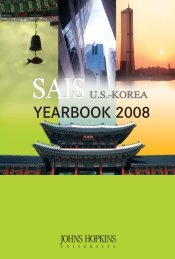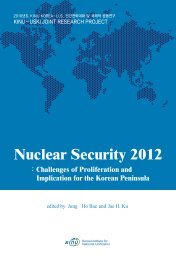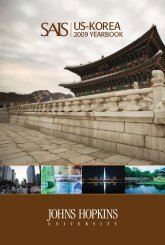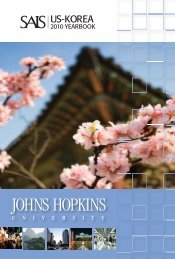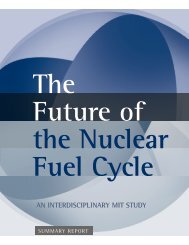Silent Partners: Chinese Joint Ventures in North Korea - US-Korea ...
Silent Partners: Chinese Joint Ventures in North Korea - US-Korea ...
Silent Partners: Chinese Joint Ventures in North Korea - US-Korea ...
You also want an ePaper? Increase the reach of your titles
YUMPU automatically turns print PDFs into web optimized ePapers that Google loves.
<strong>Silent</strong> <strong>Partners</strong>: <strong>Ch<strong>in</strong>ese</strong> <strong>Jo<strong>in</strong>t</strong> <strong>Ventures</strong> <strong>in</strong> <strong>North</strong> <strong>Korea</strong> Transcript 8<br />
<strong>in</strong>sult<strong>in</strong>g I th<strong>in</strong>k I th<strong>in</strong>k they f<strong>in</strong>d it rather presumptuous of the <strong>Ch<strong>in</strong>ese</strong> to impose this reform<br />
and open<strong>in</strong>g model on them and I th<strong>in</strong>k the <strong>Ch<strong>in</strong>ese</strong> have been repectful and not used that term<br />
frequently. But they did use it <strong>in</strong> August and I th<strong>in</strong>k the quote was, and this comes right out of<br />
X<strong>in</strong>hua, they said, “Besides Beij<strong>in</strong>g Kim also toured some of Ch<strong>in</strong>a’s reform and open<strong>in</strong>g<br />
upfronts <strong>in</strong>clud<strong>in</strong>g the Economic Development Zone, bonded ports, and high tech companies <strong>in</strong><br />
the cities of Dalian and Tianj<strong>in</strong> and Shenyang.” So I mean, they’re start<strong>in</strong>g to use the word<br />
open<strong>in</strong>g and reform more often as an example to <strong>North</strong> <strong>Korea</strong>. And I th<strong>in</strong>k, the question amongst<br />
most people <strong>in</strong> Ch<strong>in</strong>a is, why are they not tak<strong>in</strong>g advantage of this<br />
Before you can really th<strong>in</strong>k about <strong>Ch<strong>in</strong>ese</strong> <strong>in</strong>vestment <strong>in</strong>to <strong>North</strong> <strong>Korea</strong> you k<strong>in</strong>da also have to<br />
look at <strong>Ch<strong>in</strong>ese</strong> outbound <strong>in</strong>vestment globally. It’s not unique <strong>in</strong> many ways to <strong>North</strong> <strong>Korea</strong>,<br />
there is a sense <strong>in</strong> South <strong>Korea</strong> however that there has been this wave of <strong>in</strong>vestment that has<br />
come <strong>in</strong>to <strong>North</strong> <strong>Korea</strong> recently, but <strong>in</strong> reality it’s been a wave of outbound <strong>in</strong>vestment globally.<br />
So, if you look at it narrowly it’s a bit more dramatic <strong>in</strong> the <strong>North</strong> <strong>Korea</strong>n sense, partly because<br />
of not a lot of other <strong>in</strong>vestment flow<strong>in</strong>g <strong>in</strong> so it’s got a much higher impact, but it really has been<br />
a fairly new phenomenon. It’s driven by a number of factors. It’s driven by Ch<strong>in</strong>a’s go abroad<br />
policy which is really driven by WTO excession. And Ch<strong>in</strong>a went through a period <strong>in</strong> the late<br />
1990s reform<strong>in</strong>g its state-run enterprises and prepar<strong>in</strong>g to open up its economy so it could jo<strong>in</strong><br />
the WTO but there was a lot of preparation done, basically awareness rais<strong>in</strong>g amongst bus<strong>in</strong>ess<br />
people, <strong>in</strong>creas<strong>in</strong>g capacity, and the recognition there would be grow<strong>in</strong>g competition<br />
domestically and the need to compete <strong>in</strong>ternationally. So, zouchuqu, this go abroad policy really<br />
facliated <strong>Ch<strong>in</strong>ese</strong> outbound <strong>in</strong>vestment globally and some of it was fairly straightforward, such<br />
as <strong>in</strong>creas<strong>in</strong>g ability for <strong>Ch<strong>in</strong>ese</strong> <strong>in</strong>vestors to access hard currency. I mean the RMB is still not<br />
convertible though one of the th<strong>in</strong>gs that happened <strong>in</strong> the mid-2000 decade was <strong>in</strong>stead of hav<strong>in</strong>g<br />
to go to the central government <strong>in</strong> Beij<strong>in</strong>g to get approval for hard currency; they centralized it<br />
so that prov<strong>in</strong>ces and eventually some local jurisdictions could basically approve outbound<br />
U.S.-<strong>Korea</strong> Institute at SAIS | 1717 Massachusetts Avenue NW, 6 th Floor | Wash<strong>in</strong>gton, DC 20036<br />
202.663.5830 | www.uskorea<strong>in</strong>stitute.org


